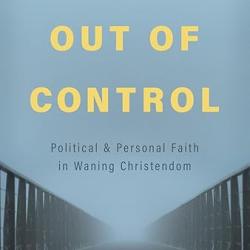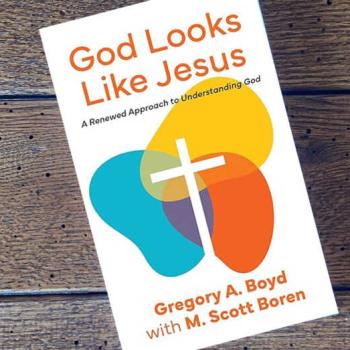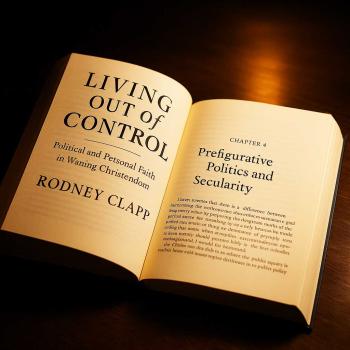The current issue of The Chronicle of Higher Education (Dec. 12, 2010) contains an article by Timothy Beal (Case Western Reserve University) entitled “Among the Evangelicals: Inside a fractured movement.” (It is available on line at: http://chronicle.com/article/Among-the-Evangelicals/125647/
The thesis seems to be twofold: 1) scholars of religion have largely ignored the movement until recently, and 2) the movement is so diverse that it can hardly be said to exist at all. The article deals almost exclusively with history and sociology highlighting studies of evangelicalism by people like Randall Balmer, Joel Capenter, Mark Noll and various non-evangelical sociologists who have studied the movement ethnographically (e.g., by studying small group Bible studies and TV evangelists).
The author, who attended Seattle Pacific University, describes evangelicalism as “a broad movement that centers on personal conversion to a ‘born again’ experience of faith in Jesus Christ, a missionary zeal to share this faith with others, and a high regard for the authority of the Bible” (three of David Bebbington’s four hallmarks of evangelicalism).
One fact that seems increasingly clear from these and other studies of the evangelical movement is this: When you view it from the sky, so to speak (the proverbial “bird’s eye view”) there seems to be an Evangelical movement, but when you study it “on the ground” (deep involvement and broad inquiry) the movement seems to disappear. From the “sky” evangelicals seem to have a lot in common in contrast to other religious affinity groups. On the “ground,” however, Evangelicalism seems to be nothing more than a bunch of very diverse Christians who share a love for Jesus, the Bible and Billy Graham. (Well, the love for Billy Graham part is certainly dissolving and I argue that it was he and his enormous ministries and their influence that really held the movement together for a while.)
Beal’s article tends to follow the now familiar pattern of looking at Evangelicalism through the lenses of mega-churches (and their ministries) and right wing politics. In other words, these tend to typify and represent evangelical Christianity in America today. One could certainly get that impression from browsing the shelves of evangelical-oriented Christian “bookstores.” (I put “bookstores” in scare quotes because most of these stores have few books and make most of their money from sales of “holy hardware.”)
These seem to me to be ephemeral expressions of what is essentially not a movement but a basic form of life created by an eclectic blend of Pietism, Revivalism and Fundamentalism. The movements that arise out of this form of life take various shapes and TV evangelism, mega-churches (of the Willow Creek and Saddleback variety), the Religious Right and the New Calvinism are just temporary manifestations that will eventually give way to others leaving their marks on the evangelical form of life for better or worse. (Earlier examples include the Keswick movement and the Jesus People movement.)
So what is this “evangelical form of life?” Certainly not a cohesive movement; various movements grow out of it and give it diverse expressions and sometimes take advantage of it and occasionally alter it somewhat. But the evangelical form of life is historically identifiable beneath and behind the movements associated with it. It can best be described as Jesus-centered conversional piety committed to the ultimate authority of the Bible for theology and ethics. It was born out of what scholar R. W. Ward has labeled the “Evangelical Awakenings” in Europe, Britain and America; it’s mothers and fathers were the continental Pietists and British Puritans–all of who emphasized heart-felt spirituality over confessional orthodoxy while remaining basically orthodox (i.e., “catholic”).
One person who seemed to grasp this (earlier if not presently) was Randall Balmer in his now classic book and video series Mine Eyes Have Seen the Glory. He described Evangelicalism as America’s folk religion. He shined his historical and sociological spotlight on a variety of organized expressions of Evangelicalism: an African-American church in the South, Willow Creek Community Church in Illinois, Calvary Chapels, a holiness camp meeting in the Appalachian mountains, a revivalistic summer camp for youth in New York, Voice of Calvary Ministries (John Perkins) in Mississippi, etc. Balmer calls these a subculture; I don’t see them as that united. What they share is very basic: a religious-spiritual form of life rooted in Pietism, Revivalism and Fundamentalism. (Here I am using these terms in their older, historical senses. By “Fundamentalism” I do NOT mean its contemporary popular expressions but its original expression in the early decades of the 20th century.)
I increasingly agree with those scholars who argue there is no such thing as Evangelicalism. The attempt to reify it and pin it down reminds me of those who attempted to do the same thing with the so-called New Age Movement in the 1980s. There never was a New Age Movement; it was a figment of the imaginations of media people, some sociologists, and especially conservative Christian conspiracy theorists. What there was were many manifestations of esoteric spirituality that temporarily found each other and then discovered they had less in common than they thought and stopped holding New Age conventions. Perhaps (I’d now say probably) “Evangelicalism” is just a term people have slapped on a blooming, buzzing confusion of relatively conservative, relatively revivalistic, pietistic Protestants who share only one thing–a form of life birthed out of the Evangelical Awakenings of the 17th and 18th centuries.
So what does that form of life look like? Of course, it looks very different in different people and groups. But overall and in general it looks like this: testimony of a conversion experience (whether datable or not) that marked the beginning of one’s authentic Christian life, the search for an ever stronger “personal relationship with Jesus Chirst” including a regular prayer life, love for the Bible demonstrated through devotional reading and regular study (both individual and communal), trust in the cross of Jesus Christ as the central event in human history (together with the resurrection) as one’s hope for salvation, and basic embrace of the cardinal tenets of historic Christianity including especially the deity of Jesus Christ, his virgin birth, miracles and resurrection, the Trinity (even if only in a somewhat modalistic form), original sin (inherited depravity), salvation by grace through faith, etc. Part and parcel of this form of life is belief in the supernatural power of God to work miracles.
“Evangelicals” are those who embrace and practice this form of life, but they do NOT make up a cohesive movement. Rather, various movements gather them and either enhance that form of life or take advantage of it or both. All the movements come and go; none is identical to or necessary for the flourishing of the evangelical form of life.
What gets called “the Evangelical movement” is nothing more than a diverse collection of people who share the evangelical form of life OR a particular organized expression of that form of life extended into politics or ethical activism or evangelism or worship renewal.












